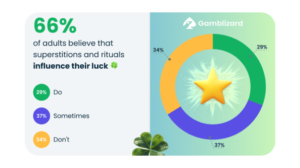Oscars’ Grind and James Bond Roulette Strategies
Whether you’re aiming for steady, small wins or prefer covering large sections of the wheel for a higher chance of hitting numbers, Oscar’s Grind and James Bond roulette systems offer new ways to approach the game. This article will introduce you to their mechanics and provide practical examples you can learn from. Although Oscar’s Grind and James Bond are not very difficult to master, these strategies are moderately complex and are better suited for experienced players. If you’re still learning the basics of roulette, check out our beginner’s guide before moving on to these betting methods.
Oscar’s Grind Betting System
Introduced by Allan N. Wilson in his book The Casino Gambler’s Guide (1965), where he credited it to an unknown dice player named Oscar, Oscar’s Grind system is one of the slowest – and simplest – betting strategies. Unlike more aggressive systems (Martingale), it aims for small, incremental profits, allowing the player to keep the risks lower and win without escalating losses.
Fyodor Dostoevsky, who was known for his fascination with gambling and roulette, famously expressed the principles of the Oscar Grind system:
“If you gamble in small doses every day, it is impossible not to win.”
How Oscar’s Grind works
“It is the willingness to be content with a profit of one unit, where the greedy player might try for more, that is the saving feature of this system.” Allan N. Wilson
The core principle of Oscar’s Grind is to win one unit per cycle of bets. It’s mainly used for even-money bets, which is the case in roulette, where the odds are nearly 50/50 (Red/Black, Odd/Even). The player starts with a low stake, and the wager only increases after a win. However, if the player approaches their goal of winning one unit, they adjust their bet size to avoid exceeding that target.
Briefly, the rules are:
- You wager one unit to begin an Oscar’s Grind bet;
- You keep the next bet the same (one unit) if the first bet loses;
- You increase the following bet by one unit if the first bet wins;
- You adjust the bet size again if the next bet exceeds a one-unit profit;
- You go back to your initial bet once you win a one-unit profit.
Real-life scenario
Let’s consider the following scenario: a player at a roulette table places a bet on Red and uses the first-bet, single-unit rule. The bet loses the first two rounds, and the player doesn’t increase it until it finally wins. When that happens, the bet is increased by a single unit.
| The Oscar’s Grind Bet | 1 | 1 | 1 | 1 | 2 | 3 |
|---|---|---|---|---|---|---|
| Win/Lose | Lose | Lose | Lose | Win | Win | Win |
| Balance | -1 | -2 | -3 | -2 | 0 | +3 |
Three consecutive wins increase the initial bet for two units (from 1 to 3). At this moment, the player exceeds the one-unit profit. The next step is going back to the initial one-unit bet.
As this example shows, Oscar’s Grind can slowly accumulate small wins. However, a long streak of losses could occur, posing an always-present risk.
Oscars’ Grind is simple to understand but requires restraint and resolve: long streaks of alternating wins and losses in “choppy” games can cause significant losses before a win materialises, as explained by Michael Shackleford in the video below.
Oscar’s Grind Betting System – What Is And How To Use
- Pros
- Oscar’s Grind is less risky because it avoids rapid increases in bet size. Large losses are not as frequent as in aggressive systems.
- The system works well when wins and losses come in streaks. It allows players to recover from losses and reach their goal of a one-unit profit.
- This strategy allows for extended play because it emphasises small, incremental bets. Players can continue playing longer without quickly depleting their bankroll.
- Oscar’s Grind roulette strategy has simple and easy-to-follow rules. No complex calculations are needed, making it accessible to beginners.
- Cons
- Oscar’s Grind can’t keep winning against the house edge in the long run. Extended losing streaks can still result in heavy losses.
- The methodical pace of Oscar’s Grind means it can take a long time to achieve significant profits. The “grind” nature of the system is time-consuming.
- This strategy demands a calm and patient approach. Players must overcome the temptation to chase big wins or increase bets too quickly.
- When wins and losses alternate frequently, Oscar’s Grind is less effective. It relies on streaks to recoup losses, and inconsistent outcomes can hinder progress.
James Bond Roulette Strategy
It was named after the iconic British spy, but you won’t find it in the original James Bond films or novels. Instead, this roulette strategy likely owes its name to the similarities between its elegant mechanics and Bond’s debonair persona. If you’re familiar with Casino Royale, you know that Bond is no stranger to gambling.
The James Bond roulette tactic can’t be tied to a single inventor, as it was simply created by gamblers in pursuit of high win rates. This system covers a large portion of the roulette table and increases the probability of winning on each spin.
How the James Bond system works
The James Bond strategy uses a fixed amount of money divided into three bets that cover more than half of the possible outcomes on the roulette wheel. This system is applied in European or French roulette, where the wheel only has one zero.
Here’s a breakdown of the bets:
- First, you place 70% of an even-odds bet of 1:1 on high numbers(19–36).
- The 25% of your wager goes to numbers 13–18 on the six-line.
- You put the remaining 5% of the bet on zero.
Real-Life scenario
Does the James Bond roulette strategy work? Let’s use units for demonstration. The first 14 units go on high numbers (19–36), 5 units are placed on numbers 13–18, and 1 unit is on zero. Now, you have 20 units covering a huge portion of the table. What are your winning chances?
| James Bond Roulette Bet | Win | Net Profit | Probability |
|---|---|---|---|
| 14 units on 19–36 | 14 units | 8 units | 48.6% |
| 5 units on 13–18 | 30 units | 10 units | 16.2% |
| 1 unit on 0 | 35 units | 16 units | 2.7% |
You are most likely to win if the ball lands between 19 and 36. If this happens, you win 14 units in addition to the 14 units you’ve invested. The net profit is 8 units for a 20-unit stake, which is less than 50% of the original bet.
The net profit gets higher as the probability chance increases. Ideally, you want the ball to hit zero, in which case you win a total of 36 units, a whole 180% of the initial bet. Your James Bond roulette bet loses if the ball falls anywhere between 1 and 12. The probability of this happening is 32.5%, which leaves you a 67.5% chance of winning.
Despite its high winning rate, the James Bond strategy isn’t flawless. Skilled players who lose all their bets often apply the Martingale system to recuperate their losses. That is far from a perfect backup strategy, as this video explains:
The “Unbeatable” James Bond Betting Strategy: Exploring 007’s Roulette System
- Pros
- The James Bond roulette system covers over half of the numbers on the roulette wheel, so there’s a higher chance of winning on any given spin.
- The strategy offers higher payout potential and as much as four levels of profit: a win on the high numbers gives a modest payout, while hitting the six-line bet or zero offers larger rewards.
- The James Bond strategy is fun to use because it combines multiple bets and offers high rewards in each round.
- The system’s simple formula is easy to understand and apply, even for novice players.
- Cons
- The James Bond strategy requires a significant starting stake (20 units per round). That makes it unsuitable for low-budget players or those with a limited bankroll.
- The system can result in extended losing streaks and quickly delete the bankroll after a few consecutive losses.
- This strategy is not suitable for American roulette because the double zero increases the house edge and decreases the odds of winning.
- If a player adopts a negative progression (like Martingale) after losses, they may quickly hit the table’s maximum betting limit, preventing further progression and recouping losses.
References
- “Fyodor Dostoevsky.” Roulette Star, www.roulettestar.com/people/fyodor-dostoevsky/. Accessed September 12, 2024.
- Pawlicki, Christopher. Get the Edge at Roulette. Square One Publishers, 2001.
- Stigall, James. Roulette Strategy: The Complete Guide to Using Betting Systems at the Roulette Table. CreateSpace Independent Publishing Platform, 2014.
- “The ’Unbeatable’ James Bond Betting Strategy: Exploring 007’s Roulette System.” Video by Casino Matchmaker, YouTube, August 26, 2023, www.youtube.com/watch?v=XEbWPLg1iYQ. Accessed on September 3, 2024.
- Winkler, Peter. The Mathematics of Betting Systems. American Mathematical Monthly, vol. 116, no. 10, 2009, pp. 820–829. JSTOR, www.jstor.org/stable/40391160. Accessed on September 3, 2024.
- Wilson, Allan N. The Casino Gambler’s Guide. Harper & Row, 1965.













